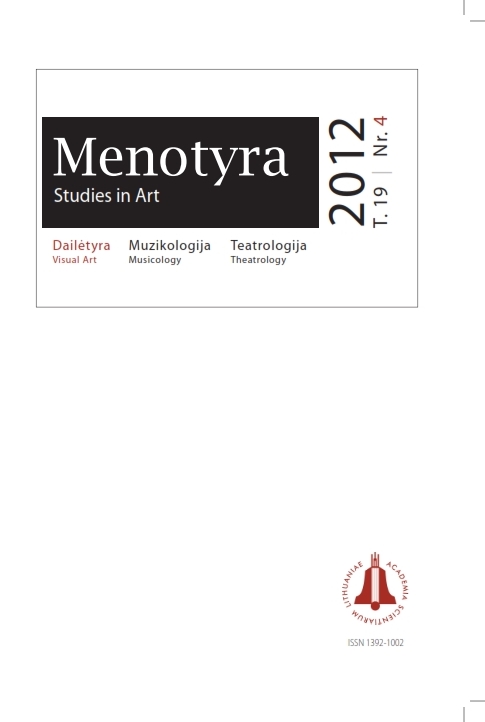Ecclesia parochialis in oppido Szaule murata, tituli
SS. Petri et Pauli apostolorum, habens omnem decorem
Ecclesia parochialis in oppido Szaule murata, tituli
SS. Petri et Pauli apostolorum, habens omnem decorem
Author(s): Aleksandra Szymanowicz-HrenSubject(s): Fine Arts / Performing Arts, Architecture
Published by: Lietuvos mokslų akademijos leidykla
Keywords: Šiauliai; Samogitia; Nicolas Christopher Radziwiłł “Sierotka”; Gian Maria Bernardoni; Philibert de l’Orme; Jacques Androuet du Cerceau; Jeremias and Rudolph Wyssenbach; French mannerism
Summary/Abstract: The Church of St. Paul and Peter in Šiauliai is one of the greatest and in the matter of style the most puzzling example of sacral architecture of the 17th century in the region of Samogitia. This paper sorts out and completes information about its origin as well as attempts to point at the sources of artistic forms used in the building. As an outcome of a comparing-stylistic analysis it signalizes an issue of the reception of French mannerism in the area of the Great Duchy of Lithuania.The parish in Šiauliai was established in the 15th century. A decision to build a new church was taken between the years 1610 and 1616. Responsible for it were a bishop of Samogitia Nicolas Pac and lieutenant of the region prince Nicolas Christopher Radziwiłł nicknamed “Sierotka”. After the death of the prince in 1616 the successor of his office, Jerome Wołłowicz, was in charge of the church building. During his term of office the church was finished in its main part. It was consecrated in October 1634 by George Tyszkiewicz, bishop of Samogitia.The analysis of the forms used in the church show far-going similarities with French architecture from the 16th century in the plan and space disposition of the building as well as in its construction, till the decorative elements like stonework. Those forms are mostly derived from the artistic œvre of Philibert de l’Orme and Jacques Androuet du Cerceau. The existence of such artistic change is plausible when one takes into consideration the education and journey of the first founder, prince Radziwiłł. The exact ways of this exchange still need to be clarified.
Journal: Menotyra
- Issue Year: 19/2012
- Issue No: 4
- Page Range: 267-284
- Page Count: 18
- Language: Polish

